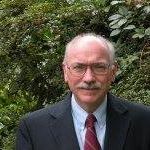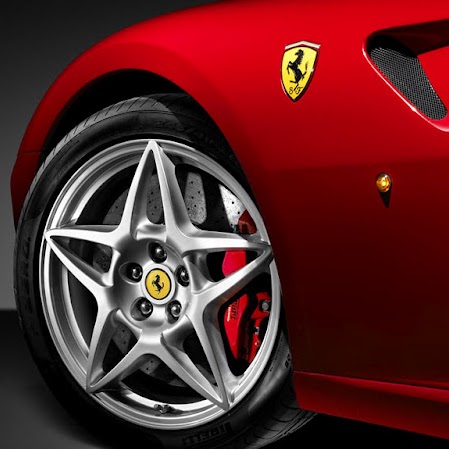Paul A Roy
age ~86
from Ramona, CA
- Also known as:
-
- Paula Roy
- Sally Roy
- Roy A Paul
Paul Roy Phones & Addresses
- Ramona, CA
- Escondido, CA
- 14806 Budwin Ln, Poway, CA 92064 • (858)7487594
- Gardena, CA
- Temecula, CA
- San Diego, CA
- 14806 Budwin Ln, Poway, CA 92064 • (209)9869030
Work
-
Position:Homemaker
Education
-
Degree:Graduate or professional degree
Emails
Us Patents
-
Golf Club Shaft And Method Of Manufacture
view source -
US Patent:56265298, May 6, 1997
-
Filed:Sep 18, 1995
-
Appl. No.:8/530779
-
Inventors:Paul A. Roy - Poway CA
-
Assignee:Vantage Associates, Inc. - San Diego CA
-
International Classification:A63B 5310
-
US Classification:473319
-
Abstract:A golf club shaft having a high modulus of elasticity in the grip end of the shaft to enhance stiffness, and a low modulus of elasticity in the tip end of the shaft to provide flexibility, and a method of manufacturing such a golf club shaft is disclosed.
-
Golf Shaft Having Controlled Flex Zone
view source -
US Patent:43197507, Mar 16, 1982
-
Filed:Apr 30, 1979
-
Appl. No.:6/034414
-
Inventors:Paul A. Roy - Poway CA
-
Assignee:Aldila, Inc. - San Diego CA
-
International Classification:A63B 5310
-
US Classification:273 80B
-
Abstract:Presented is a golf shaft designed to have a "kick" point or "flex" zone at a predetermined location along the length of the shaft. How and where the shaft bends or flexes during the down swing has a strong influence on how the club "feels" to the golfer. How and where the shaft bends during the down swing is determined by the construction of the golf shaft and presented herewith is a golf shaft structure and method of making it which controls the position of the flex point along the length of the shaft so that a variety of shafts having different flex characteristics may be manufactured to suit the dictates of individual players.
-
Method Of Manufacturing Golf Club Shafts
view source -
US Patent:48895750, Dec 26, 1989
-
Filed:Jun 24, 1988
-
Appl. No.:7/211462
-
Inventors:Paul A. Roy - Poway CA
-
Assignee:Fiber-Speed International, Inc. - Naples FL
-
International Classification:A63B 5310
-
US Classification:156189
-
Abstract:A golf club shaft of increased playability and feel is manufactured with a generally hollow and tapered cylindrical wall comprised of a plurality of layers of fibers and a resin binding the plurality of layers of fibers together into an integrated structure. The shaft includes a portion of constant outer diameter adjacent one end adapted to accept a grip and a portion of a smaller constant diameter adjacent the other adapted to be fitted to the hosel of a club head and a portion intermediate the two end portions with a uniformly tapering diameter. The golf club comprises a plurality of layers of fibers arranged and oriented within the shaft to resist torsional deflection and to provide a controlled and variable flexural resistance, permitting the player to recover energy stored in the shaft during the swing and to apply that energy to the ball for greater distance. The inner and outer layers of fibers include fibers running both perpendicular and parallel to the longitudinal axis of the shaft. The central layers include fibers running longitudinally along, or spiralling at a selected angle around, the axis of the shaft.
-
Golf Club Shaft And Method Of Manufacture
view source -
US Patent:47579978, Jul 19, 1988
-
Filed:Aug 12, 1986
-
Appl. No.:6/895728
-
Inventors:Paul A. Roy - Poway CA
-
Assignee:Fiber-Speed International, Inc. - Naples FL
-
International Classification:A63B 5210
-
US Classification:273 80R
-
Abstract:A golf club shaft of increased playability and feel is manufactured with a generally hollow and tapered cylindrical wall comprised of a plurality of layers of fibers and a resin binding the plurality of layers of fibers together into an integrated structure. The shaft includes a portion of constant outer diameter adjacent one end adapted to accept a grip and a portion of a smaller constant diameter adjacent the other adapted to be fitted to the hosel of a club head and a portion intermediate the two end portions with a uniformly tapering diameter. The golf club comprises a plurality of layers of fibers arranged and oriented within the shaft to resist torsional deflection and to provide a controlled and variable flexural resistance, permitting the player to recover energy stored in the shaft during the swing and to apply that energy to the ball for greater distance. The inner and outer layers of fibers include fibers running both perpendicular and parallel to the longitudinal axis of the shaft. The central layers include fibers running longitudinally along, or spiralling at a selected angle around, the axis of the shaft.
-
Insulating Structure With Polygonal Cells
view source -
US Patent:42475830, Jan 27, 1981
-
Filed:Oct 30, 1978
-
Appl. No.:5/956064
-
Inventors:Paul D. Roy - La Crescenta CA
-
International Classification:B32B 312
-
US Classification:428116
-
Abstract:An insulating structure or matrix with polygonal cells is formed with flexible partition sheets, each sheet being a laminate including a layer of paper and a layer of metallic foil, the optically reflecting surfaces of adjacent sheets facing in the same direction. Segments of adjacent sheets are joined by adhesive seams and cooperate to define polygonal spaces in a honeycomb-like structure upon expansion of the matrix structure. The matrix is bounded by flanges at its outer surfaces, parallel with the matrix in contracted configuration, for securement of the insulating structure in place upon installation. An alternative embodiment has optically reflective layers at both sides of a paper layer.
Isbn (Books And Publications)


Managing Profitability and Lawyer Compensation: Materials Prepared for a Continuing Legal Education Seminar Held in Vancouver, B.C. on January 29, 1986
view sourceAuthor
Paul D. Roy
ISBN #
0865042470


License Records
Paul B Roy
License #:
12062 - Expired
Issued Date:
Jul 22, 1994
Renew Date:
Oct 1, 2011
Expiration Date:
Sep 30, 2014
Type:
Journeyman Electrician
Paul B Roy
License #:
25236 - Expired
Issued Date:
Dec 13, 1997
Renew Date:
Oct 1, 2011
Expiration Date:
Sep 30, 2014
Type:
Master Electrician
Paul A Roy
Address:
Poway, CA 92064
License #:
24160 - Expired
Expiration Date:
Jun 30, 1984
Type:
Civil Engineer
Paul H Roy
License #:
108578 - Expired
Issued Date:
Apr 19, 1988
Expiration Date:
Mar 11, 1998
Type:
Salesperson
Name / Title
Company / Classification
Phones & Addresses
Owner
Canadian Refrigerated Equipment
CRE
Refrigeration Equipment-Commercial-Sales/Service. Restaurant Equipment & Supplies
CRE
Refrigeration Equipment-Commercial-Sales/Service. Restaurant Equipment & Supplies
146 Aldgate Rd., Winnipeg, MB R2N 2E6
(204)9810937
(204)9810937
Roy, Johnston & Company LLP
Lawyers. Notaries Public. Mediation Services
Lawyers. Notaries Public. Mediation Services
363 10th Street, Brandon, MB R7A 4E9
(204)7270761, (204)7261339
(204)7270761, (204)7261339
President
On the Level Construction
Patio. Porch and Deck Enclosure Companies. Fence
Patio. Porch and Deck Enclosure Companies. Fence
49 Martin Crossing Green NE, Calgary, AB T3J 3P1
(403)6152583, (403)2851359
(403)6152583, (403)2851359
Owner
Roy's Refrigeration Service
Heating & Air Conditioning
Heating & Air Conditioning
1461 Aldgate Road, Winnipeg, MB R2N 2Z6
(204)2573535
(204)2573535
President
Brookhollow Phase III Owners' Association
18662 Macarthur Blvd, Irvine, CA 92612
7700 Irvine Ctr Dr, Irvine, CA 92618
2102 Business Ctr Dr, Irvine, CA 92612
7700 Irvine Ctr Dr, Irvine, CA 92618
2102 Business Ctr Dr, Irvine, CA 92612
Owner
Appraisal Department
Real Estate Agent/Manager Business Services
Real Estate Agent/Manager Business Services
Glendale, CA 91208
(818)2494667
(818)2494667
Owner
Roy's Refrigeration Service
Heating & Air Conditioning
Heating & Air Conditioning
(204)2573535
President
On the Level Construction
Patio · Porch and Deck Enclosure Companies · Fence
Patio · Porch and Deck Enclosure Companies · Fence
(403)6152583, (403)2851359
Lawyers & Attorneys

Paul Roy - Lawyer
view sourceOffice:
Mayer Brown LLP
Specialties:
Information Technology
Business & Technology Sourcing
Corporate & Securities
Financial Institutions M&A
Hospitality & Leisure
India
Privacy & Security
Technology, Media & Telecommunications
Business & Technology Sourcing
Corporate & Securities
Financial Institutions M&A
Hospitality & Leisure
India
Privacy & Security
Technology, Media & Telecommunications
ISLN:
901962360
Admitted:
1985
University:
Colby College, B.A., 1978; Northwestern University, M.B.A., 1981
Law School:
Loyola University Chicago School of Law, J.D., 1985
Resumes

Paul Roy
view sourceWork:
Residential and Commercial Real Estate
1993 to 2000
General Manager Coldwell Banker Westinghouse and Rockwell Hanford Companies
May 1989 to Jan 1993
Safeguard and Security Specialist Westinghouse and Rockwell Hanford Companies
Jun 1984 to Jul 1989
Security Manager Westinghouse and Rockwell Hanford Companies
Apr 1983 to Oct 1984
Security/ Law Enforcement Officer United States Army - Military Police
Dec 1978 to Dec 1982
COMMUNITY AND VOLUNTEER EFFORTS
1993 to 2000
General Manager Coldwell Banker Westinghouse and Rockwell Hanford Companies
May 1989 to Jan 1993
Safeguard and Security Specialist Westinghouse and Rockwell Hanford Companies
Jun 1984 to Jul 1989
Security Manager Westinghouse and Rockwell Hanford Companies
Apr 1983 to Oct 1984
Security/ Law Enforcement Officer United States Army - Military Police
Dec 1978 to Dec 1982
COMMUNITY AND VOLUNTEER EFFORTS
Education:
Columbia Basin College Washington State University Branch Campus
1983 to 2000
General Studies, Business Management
1983 to 2000
General Studies, Business Management
Classmates

Paul Roy
view sourceSchools:
Farmington High School Farmington CT 1965-1969
Community:
Lyn Mccorkindale, Carolyn Brownawell

Paul Roy
view sourceSchools:
St. Pierre High School St. Pierre Palestinian Territory, Occupie 1963-1967
Community:
Lucie Snow, Arthur Belanger, Roger Arpin, Carmelle Laroche

Paul Roy
view sourceSchools:
Louis Riel Collegiate Winnipeg Palestinian Territory, Occupie 1974-1978
Community:
Lorraine Berube, Murray Grafton, Louise Sabourin, Louis Soulodre

Paul Roy (Paul Roy)
view sourceSchools:
Vanier High School Donnelly Azores 1951-1955
Community:
Lorraine Tanasichuk, Bruce Doig, Isabelle Hausler

Paul Roy
view sourceSchools:
Langlois School Donnelly Azores 1949-1953
Community:
Raymond Boisvert, Paul Roy, Denise Beauchamp, Joanne Verstraete, Susan Chauvette

Paul Roy
view sourceSchools:
Langlois School Donnelly Azores 1948-1952
Community:
Raymond Boisvert, Denise Beauchamp, Paul Roy, Joanne Verstraete, Susan Chauvette

Paul Roy
view sourceSchools:
Roland-Pepin High School Campbellton NB 2002-2006
Community:
Marc Bouchard, Lucie Pelletier

Paul Mohan Roy
view source
Paul Roy Cruz
view source
Paul John Roy
view source
Paul Joseph Roy
view source
Paul Edwin Roy
view source
Paul John Roy
view source
Paul Roy
view source
Paul Kristoffer Roy
view sourceYoutube
Plaxo

Roy Paul
view sourceLondon UK

Roy Paul
view sourcePretoria

Roy Paul
view sourceGIS Developer at The Center for GIS

Roy Paul
view sourceKuwaitFinance at AMD

Paul Roy
view sourceVantage

Paul Roy
view sourceIT'S SO GOOD TO
Googleplus

Paul “Rfdjake7” Roy
Work:
Uncle Phil's Group 2 Circus - Clown Car Driver
Education:
Key West School of Mixology

Paul Roy (Nmbbeachboy)
Relationship:
In_a_relationship
About:
A channel that you've never seen before...MINE .None of you have seen me because I'm new to YouTube.
Tagline:
I'm a creative, young, and athletic person.

Paul Roy
Relationship:
Married
About:
ALWAYS PUTING MY FOOT IN MY YAPPER
Bragging Rights:
Most unmegated gall, most hudespa, & pinashe

Paul Roy
About:
Http://paulroymusic.com/

Paul Roy

Paul Roy

Paul Roy

Paul Roy
Flickr
News

Horse-Racing Trainer Henry Cecil Dies at 70
view source- "His record as a trainer was one of almost unparalleled achievement, but more than that he generated a level of affection from both racing's participants and followers that few others in sport can ever have matched," British Horseracing Authority chairman Paul Roy said.
- Date: Jun 11, 2013
- Category: Sports
- Source: Google

Joyce Struggles to Keep Knight Afloat After Profit Erased
view source- Toms a really solid guy, a good leader, Paul Roy, thefounding partner of London-based investment firm NewSmithCapital Partners LP, said in a telephone interview. Joyce workedat Merrill Lynch & Co. through 2001 with Roy, who was head ofthe global equity markets division. They reacted spee
- Date: Aug 02, 2012
- Source: Google
Get Report for Paul A Roy from Ramona, CA, age ~86













